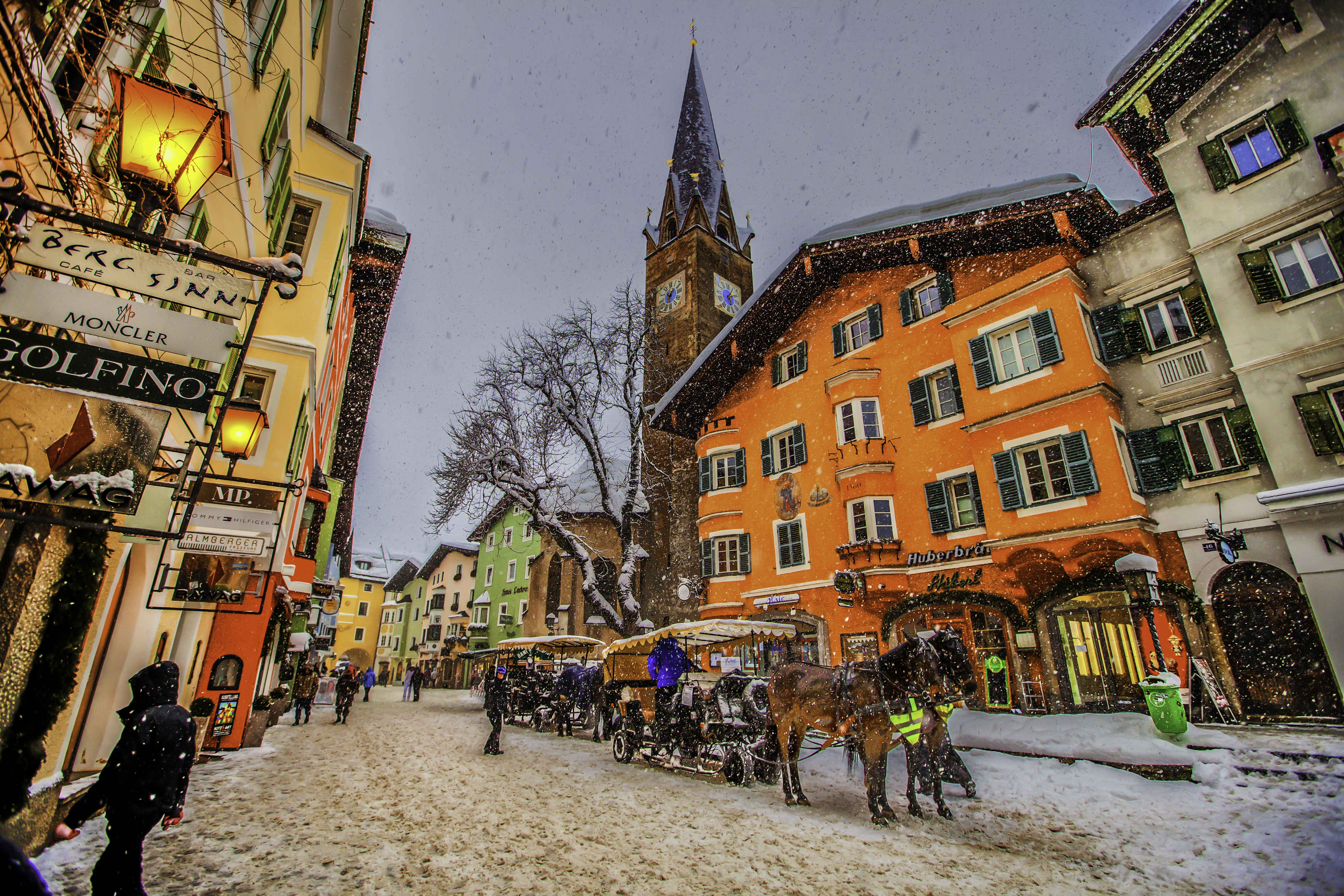|
Salzachgeier
The Salzachgeier () is a rugged peak on the edge of the Kitzbühel Alps on the border of the Austrian states of Salzburg and Tyrol. In the cirques and high alpine meadows (''Hochalmen'') of its eastern slopes and the two neighbouring peaks of ''Fünfmandling'' (2,401 m) and ''Schwebenkopf'' (2,354 m) are the headstreams of the Salzach, the largest river north of the Salzburg Central Alps. The Salzachgeier has a double summit where five sharp ridges run together. The eastern summit is only three metres lower and towers immediately above the two aforementioned source regions (the Salzachboden and Schwebenalm). Whilst the southern slopes of the three peaks descend towards the Gerlos Pass, the watershed to the north (the Salzachjoch 1,983 m) is only a kilometre from the eastern cirques. Here on the state border, high over the ''Roßwildalm'', is a mountain chapel, the ''Markkirchl'' (St. Mark's Chapel) and somewhat lower down is the New Bamberg Hut run by the German Alpin ... [...More Info...] [...Related Items...] OR: [Wikipedia] [Google] [Baidu] |
Kitzbühel Alps
The Kitzbühel Alps (german: Kitzbüheler Alpen or ''Kitzbühler Alpen'') are a mountain range of the Central Eastern Alps surrounding the town of Kitzbühel in Tyrol, Austria. Geologically they are part of the western slate zone (greywacke zone). Location Two-thirds of the Kitzbühel Alps lie within the Austrian province of Tyrol, the remaining third is in Salzburg province. They are about long from east to west and 25 to 35 km wide. They extend from the Ziller valley and Tux Alps in the west to the Saalach river and Zell am See on Lake Zell (''Zellersee'') in the east. They are bordered to the south by the Zillertal Alps and the High Tauern mountain range on the other side of the Salzach River, on the north by the Inn River and the Northern Limestone Alps. The boundary of the region runs along the Salzach valley via Zell am See, where the Salzach swings north, to Saalfelden. Its northern boundary runs from east to west from the Saalfelden basin along the valley of the ... [...More Info...] [...Related Items...] OR: [Wikipedia] [Google] [Baidu] |
New Bamberg Hut
The New Bamberg Hut (german: Neue Bamberger Hütte) lies at 1,756 m AMSL in the Kelchsau in the Kitzbühel Alps in Austria and is a mountain hut owned by the German Alpine Club's Bamberg Section. The hut may be reached either from the Kelchsau – from the ''Gasthof Wegscheid'' inn in the ''Kurzen Grund'' in just under 2 hours or from Salzburg state, from ''Gasthof Ronach'' on the old Gerlos Road over the ''Salzachjoch'' saddle in about 3½ hours. History The first Bamberg Hut was built in 1893/94 by the Bamberg Section at the foot of Piz Boè in the Sella Group in the Dolomites. They were dispossessed of this hut in 1919 by the Treaty of Saint Germain and the hut was given to the Club Alpino Italiano's ''Società degli Alpinisti Tridentini'' Section. The latter repaired the hut which had been badly damaged in the war and ran it under the name of Boè Hut.Egon Pracht: ''Alpenvereinsführer Dolomiten Sellagruppe''. Bergverlag Rudolf Rother, Munich 1980, {{ISBN, 3-7633-1303-6. R ... [...More Info...] [...Related Items...] OR: [Wikipedia] [Google] [Baidu] |
Salzach
The Salzach (Austrian: �saltsax ) is a river in Austria and Germany. It is in length and is a right tributary of the Inn, which eventually joins the Danube. Its drainage basin of comprises large parts of the Northern Limestone and Central Eastern Alps. 83% of its drainage basin () lies in Austria, the remainder in Germany (Bavaria). Its largest tributaries are Lammer, Berchtesgadener Ache, Saalach, Sur and Götzinger Achen. Etymology The river's name is derived from the German word ''Salz'' "salt" and '' Aach''. Until the 19th century, shipping of salt down the ''Salzach'' was an important part of the local economy. The shipping ended when the parallel Salzburg-Tyrol Railway line replaced the old transport system. Course The Salzach is the main river in the Austrian state of Salzburg. The source is located on the edge of the Kitzbühel Alps near Krimml in the western Pinzgau region. Its headstreams drain several alpine pastures at around (metres above the Adriatic), be ... [...More Info...] [...Related Items...] OR: [Wikipedia] [Google] [Baidu] |
Two-thousanders Of Austria
Two-thousanders are mountains that have a height of at least 2,000 metres above sea level, but less than 3,000 metres. The term is used in Alpine circles, especially in Europe (e.g. German: ''Zweitausender''). The two photographs show two typical two-thousanders in the Alps that illustrate different types of mountain. The Säuling (top) is a prominent, individual peak, whereas the Schneeberg (bottom) is an elongated limestone massif. In ranges like the Allgäu Alps, the Gesäuse or the Styrian-Lower Austrian Limestone Alps the mountain tour descriptions for mountaineers or hikers commonly include the two-thousanders, especially in areas where only a few summits exceed this level. Examples from these regions of the Eastern Alps are: * the striking Nebelhorn (2,224 m) near Oberstdorf or the Säuling (2,047 m) near Neuschwanstein, * the Admonter Reichenstein (2,251 m), Eisenerzer Reichenstein (2,165 m), Großer Pyhrgas (2,244 m) or Hochtor (2,369&nbs ... [...More Info...] [...Related Items...] OR: [Wikipedia] [Google] [Baidu] |
Mountains Of Salzburg (state)
A mountain is an elevated portion of the Earth's crust, generally with steep sides that show significant exposed bedrock. Although definitions vary, a mountain may differ from a plateau in having a limited summit area, and is usually higher than a hill, typically rising at least 300 metres (1,000 feet) above the surrounding land. A few mountains are isolated summits, but most occur in mountain ranges. Mountains are formed through tectonic forces, erosion, or volcanism, which act on time scales of up to tens of millions of years. Once mountain building ceases, mountains are slowly leveled through the action of weathering, through slumping and other forms of mass wasting, as well as through erosion by rivers and glaciers. High elevations on mountains produce colder climates than at sea level at similar latitude. These colder climates strongly affect the ecosystems of mountains: different elevations have different plants and animals. Because of the less hospitable terrain and ... [...More Info...] [...Related Items...] OR: [Wikipedia] [Google] [Baidu] |
Mountains Of Tyrol (state)
A mountain is an elevated portion of the Earth's crust, generally with steep sides that show significant exposed bedrock. Although definitions vary, a mountain may differ from a plateau in having a limited summit area, and is usually higher than a hill, typically rising at least 300 metres (1,000 feet) above the surrounding land. A few mountains are isolated summits, but most occur in mountain ranges. Mountains are formed through tectonic forces, erosion, or volcanism, which act on time scales of up to tens of millions of years. Once mountain building ceases, mountains are slowly leveled through the action of weathering, through slumping and other forms of mass wasting, as well as through erosion by rivers and glaciers. High elevations on mountains produce colder climates than at sea level at similar latitude. These colder climates strongly affect the ecosystems of mountains: different elevations have different plants and animals. Because of the less hospitable terrain and ... [...More Info...] [...Related Items...] OR: [Wikipedia] [Google] [Baidu] |
Mountains Of The Alps
This page tabulates only the most prominent mountains of the Alps, selected for having a topographic prominence of ''at least'' , and all of them exceeding in height. Although the list contains 537 summits, some significant alpine mountains are necessarily excluded for failing to meet the stringent prominence criterion. The list of these most prominent mountains is continued down to 2500 m elevation at List of prominent mountains of the Alps (2500–2999 m) and down to 2000 m elevation on List of prominent mountains of the Alps (2000–2499 m). All such mountains are located in either France, Italy, Switzerland, Liechtenstein, Austria, Germany or Slovenia, even in some lower regions. Together, these three lists include all 44 ultra-prominent peaks of the Alps, with 19 ultras over 3000m on this page. For a definitive list of all 82 the highest peaks of the Alps, as identified by the International Climbing and Mountaineering Federation (UIAA), and often referred to as the 'Alpi ... [...More Info...] [...Related Items...] OR: [Wikipedia] [Google] [Baidu] |
Kitzbühel
Kitzbühel (, also: ; ) is a medieval town situated in the Kitzbühel Alps along the river Kitzbüheler Ache in Tyrol, Austria, about east of the state capital Innsbruck and is the administrative centre of the Kitzbühel district (). Kitzbühel is one of the most famous and exclusive ski resorts in the world. It is frequented primarily by the international high society and has the most expensive real estate in Austria. The proximity to Munich has made it a preferred location for vacation homes among the German elite. Geography Kitzbühel is situated in the Kitzbühel Alps between Zell am See and Innsbruck. It lies in the Leukental valley on the Kitzbüheler Ache river. The town is subdivided into the municipalities of Am Horn, Aschbachbichl, Badhaussiedlung, Bichlach, Ecking, Felseneck, Griesenau, Griesenauweg, Gundhabing, Hagstein, Hausstatt, Henntal, Jodlfeld, Kaps, Mühlau, Obernau, Schattberg, Seereith, Siedlung Frieden, Am Sonnberg, Sonnenhoffeld, Staudach, Stockerdör ... [...More Info...] [...Related Items...] OR: [Wikipedia] [Google] [Baidu] |
Frommbach
The Felchbach is a river of Bavaria, Germany. It flows into the Swabian Rezat near Weißenburg in Bayern. See also *List of rivers of Bavaria A list of rivers of Bavaria, Germany: A * Aalbach *Abens * Ach * Afferbach * Affinger Bach * Ailsbach *Aisch * Aiterach *Alpbach *Alster * Altmühl *Alz * Amper * Anlauter * Arbach * Arbachgraben *Aschaff * Aschbach * Attel * Aubach, tributary of ... References Rivers of Bavaria Weißenburg-Gunzenhausen Rivers of Germany {{Bavaria-river-stub ... [...More Info...] [...Related Items...] OR: [Wikipedia] [Google] [Baidu] |
German Alpine Club
The German Alpine Club (german: links=no, Deutscher Alpenverein, DAV for short) is the world's largest climbing association and the eighth-largest sporting association in Germany. It is a member of the German Olympic Sports Confederation and the competent body for sport and competition climbing, hiking, mountaineering, hill walking, ice climbing, mountain expeditions, as well as ski mountaineering. It is an association made up of local branches known as 'sections'. History The German Alpine Club was founded as on 9 May 1869 in Munich by 36 former members of the Austrian Alpine Club around the Ötztal curate Franz Senn. It was founded in order to promote the development of tourism in the Eastern Alps through the building of mountain huts, and establishment of hiking trails, and via ferratas. The association had a large membership from the beginning, attracting 1,070 members in the first ten months. The German and the Austrian societies merged in 1873 to form the German and A ... [...More Info...] [...Related Items...] OR: [Wikipedia] [Google] [Baidu] |






